Haworthias require filtered light, well-drained soil, and average watering. They belong to the category of summer dormancy plants. So, if you want to find perfect companions for them, you must choose succulents and plants whose requirements match Haworthia.
You can plant succulents like Kalanchoes, Aloe Vera, Peperomia, Echeveria, Gasteria, and Desert Rose with Haworthia. You can also grow some flowering plants like Osteospermum and Yarrows and grasses like Blue Fescue Grass. Make sure the plants you keep have similar care requirements.
One benefit of planting flowering plants with Haworthias is that because of the former’s height, the latter will get protection from the direct sun. Additionally, these perennials are sun-loving plants.
If you want to plant other plants with Haworthia, this guide will give you some great suggestions. I have mentioned some suitable plants in this article that would be a good match for your Haworthia.
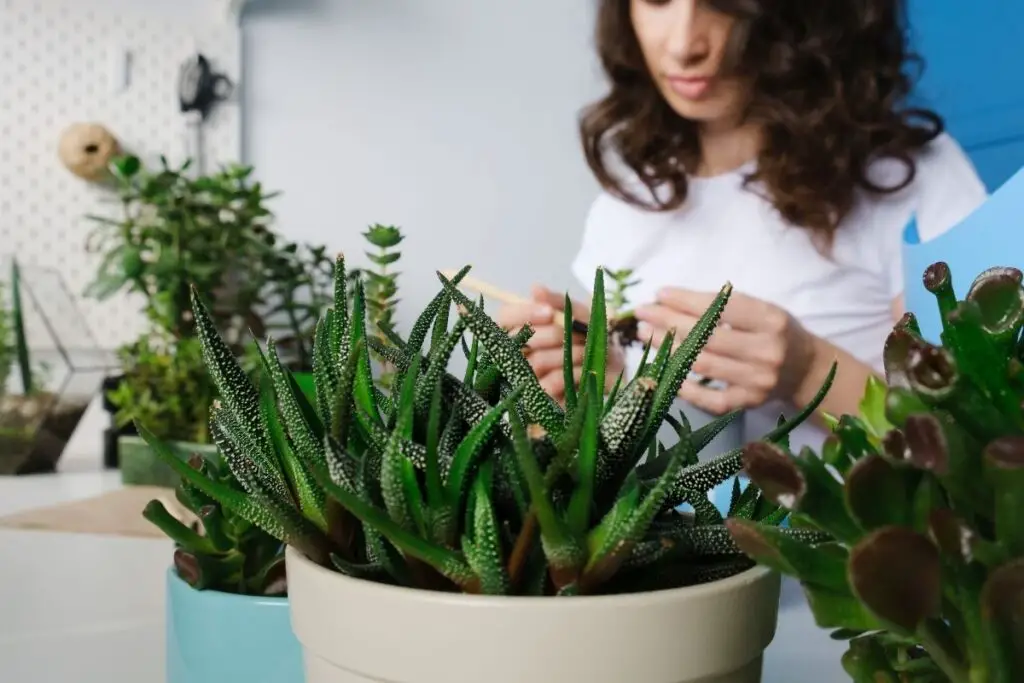
Why should I plant companions with Haworthias?
It gives your garden a splash of colors.
Only one variety of succulents can be monotonous.
But having multiple succulents and some perennials increases the garden’s visual interest.
Planting sun-loving perennials as Haworthia’s companions can save Haworthias from the direct sun.
You can play with colors and make your garden a floral carpet.
Looking for gardening supplies? We have tested 100's of products before recommending them to you guys. Check out our best pick below:
| Image | Gardening Supplies | Best Price? |
|---|---|---|
 Top
Top Top
Top | Raised Garden Bed Kit | Check On Amazon |
 | XLUX Soil Moisture Meter, Plant Water Monitor, Soil Hygrometer Sensor for Gardening, Farming, Indoor and Outdoor Plants, No Batteries Required | No Results |
 Top
Top Top
Top | 82 Pcs Garden Tools Set and Extra Succulent Tools Set | Check On Amazon |
 | Joeys Garden Expandable Garden Hose with 8 Function Hose Nozzle, Lightweight Anti-Kink Flexible Garden Hoses, Extra Strength Fabric with Double Latex Core, (50 FT, Black) | No Results |
 Top
Top Top
Top | Dual Chamber Compost Tumbler | Check On Amazon |
 Top
Top Top
Top | Sunnyglade Plant Stakes | Check On Amazon |
 Top
Top Top
Top | Organic Cold Pressed Neem Seed Oil | Check On Amazon |
 Top
Top Top
Top | Mighty Mint Gallon :-Insect and Pest Control Peppermint Oil | Check On Amazon |
 Top
Top Top
Top | Scotts DiseaseEx Lawn Fungicide | Check On Amazon |
 Top
Top Top
Top | Jacks Classic 20-20-20 All Purpose Fertilizer | Check On Amazon |
 Top
Top Top
Top | 30,000 Seeds Pollinator Attracting Wildflower Mixture | Check On Amazon |
 Top
Top Top
Top | Survival Vegetable Seeds Garden Kit-Over 16,000 Seeds | Check On Amazon |
What can I plant with Haworthias?
There are many succulents to plant with Haworthias.
Even Haworthias come in varieties with different foliage patterns.
But including some other kinds for a change will your garden’s look.
Let’s dive into it to know how other succulents and flowering plants can bring a change to your garden:
Succulents
Kalanchoes
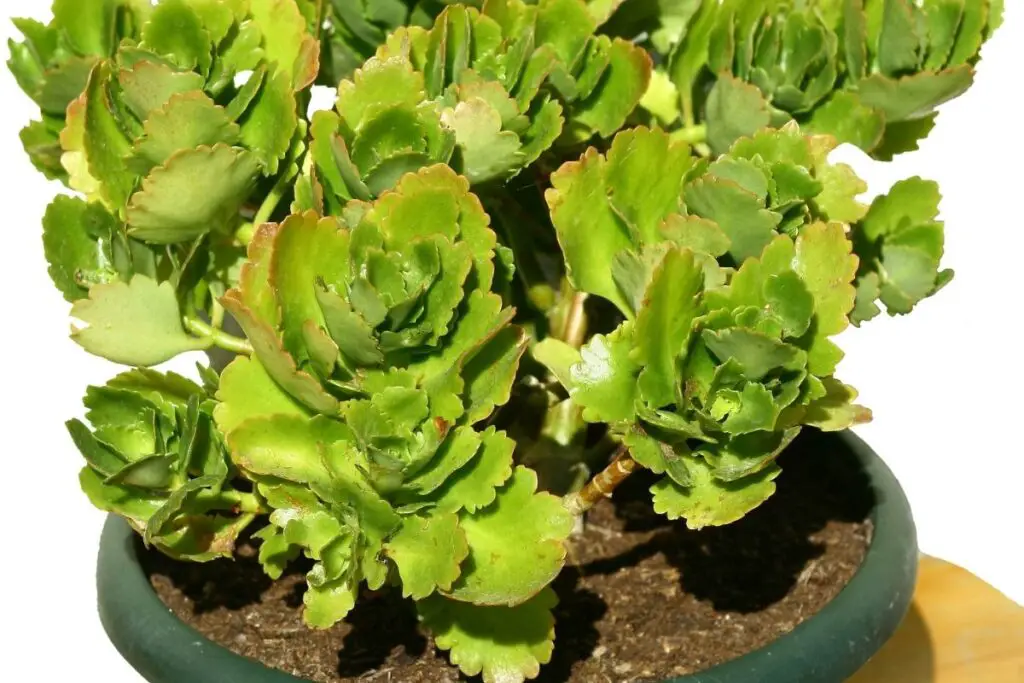
These would go perfectly with Haworthias.
They require filtered sunlight, average watering, and well-drained soil to thrive.
Kalanchoes also go dormant in the summers.
Their requirements and dormancy are the same.
So, if you grow them in the same bed, you can easily take care of them.
Kalanchoes are also slow-growing succulent like Haworthias.
They will endure temperatures ranging between 65 and 85°F.
They are sensitive to cold and will tolerate only up to 45°F.
Since they share the same requirements, you don’t have to put extra effort into them individually.
What you need to care about are your pets and children.
Kalanchoes are toxic.
If you have pets and children, who loiter around the garden often, protect the bed with physical barriers and spray some deterrents so that they cannot harm the plants or themselves.
A good thing about adding Kalanchoes to the garden with Haworthia is the former’s flowers.
Kalanchoes produce beautiful, pink or red flowers.
They can add extra vigor to the garden or your interior space.
Aloe Vera
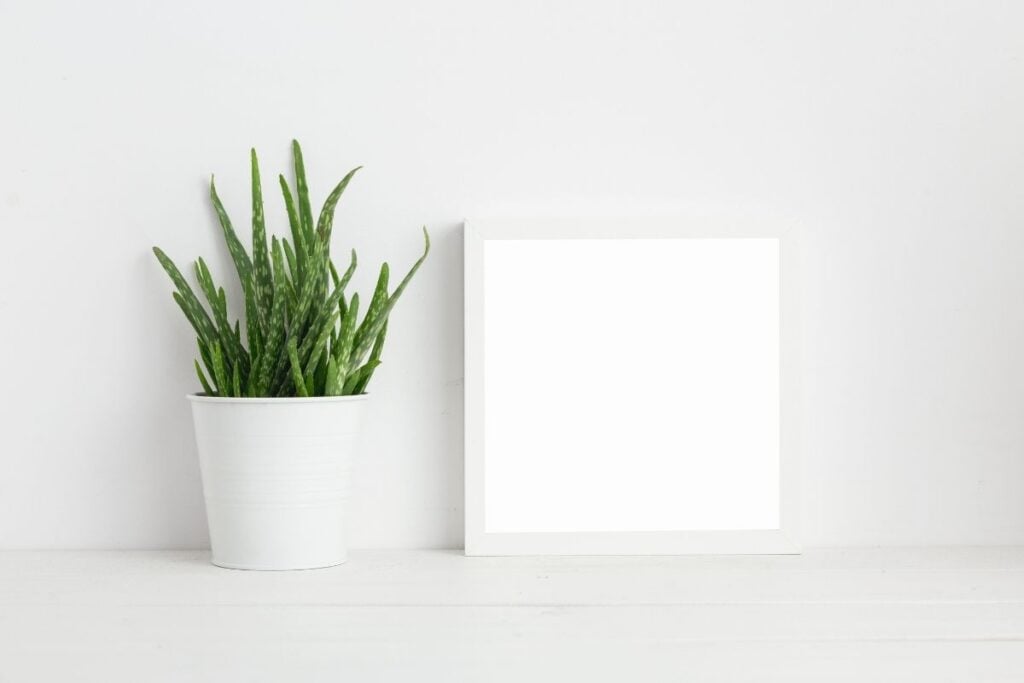
Aloe Vera is another succulent that can go ideally with Haworthias.
Many Haworthias look like Aloe plants.
So, if you love that look and want more, grow them together.
Aloe Vera requires indirect sunlight, average watering, room temperature, and well-drained soil.
They are mostly ideal for houseplants, but if you can give them an ideal growing environment outdoors, you can grow them in the garden.
If you want a companion for indoor Haworthia, Aloe is a good choice.
Though Aloe Vera plants are slow-growing plants, they grow slightly faster than the slow-growing succulents.
Aloe Vera, too, is a cold-sensitive succulent.
So, you can give both of them the same winter care.
Here too, be careful about pets and children.
They should not try to chew them.
Despite their medicinal features, ingestion results in an upset stomach.
Create physical barriers and spray deterrents.
If you have kept them indoors, which is quite common, place them somewhere where these living beings cannot reach.
Echeveria
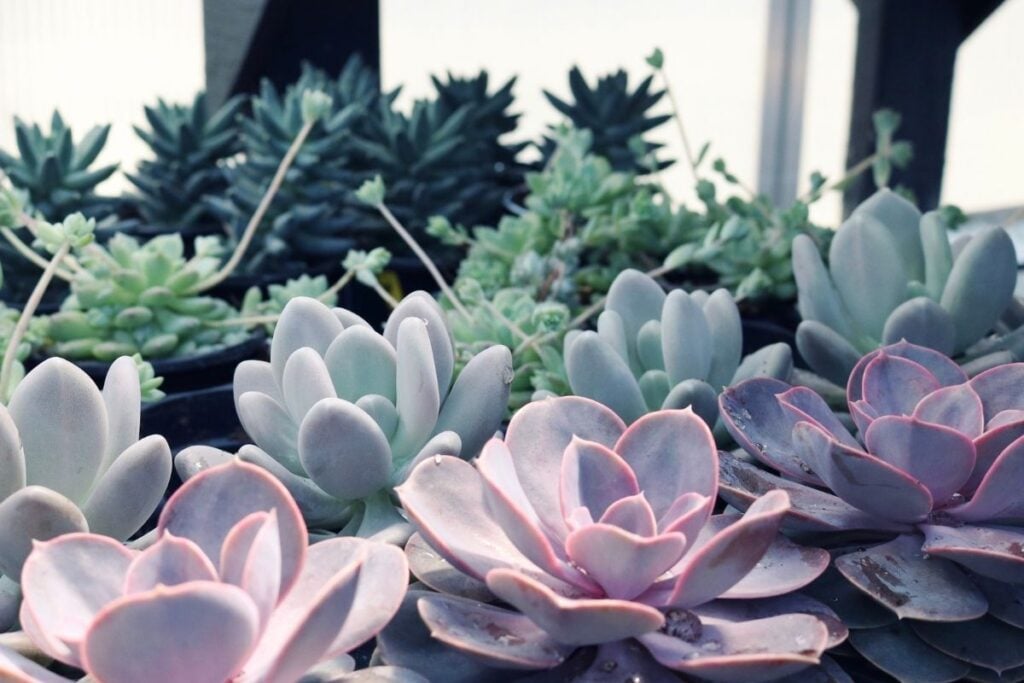
Echeveria requires bright indirect sunlight, well-drained soil, water to stay hydrated, and temperatures between 60 and 85°F.
Though some Echeverias can grow under the direct sun, they will need protection from the intense sun in the scorching summers.
If your Haworthias receives direct sun and Echeveria, partial sun, change their positions.
Other than the light conditions, other requirements are the same.
Echeverias, too cannot tolerate cold weather due to their tender nature like Haworthias.
So, you can work on it together and not separately.
Additionally, if you are growing them in big pots, you can re-pot them simultaneously because both are slow-growers.
Spring is the best time for it.
You can even feed them once a month in the spring.
Though Haworthias can also be fed in the fall, they won’t mind if not fed.
Fertilization helps boost the growth or when the plant suffers from growth issues.
Gasteria
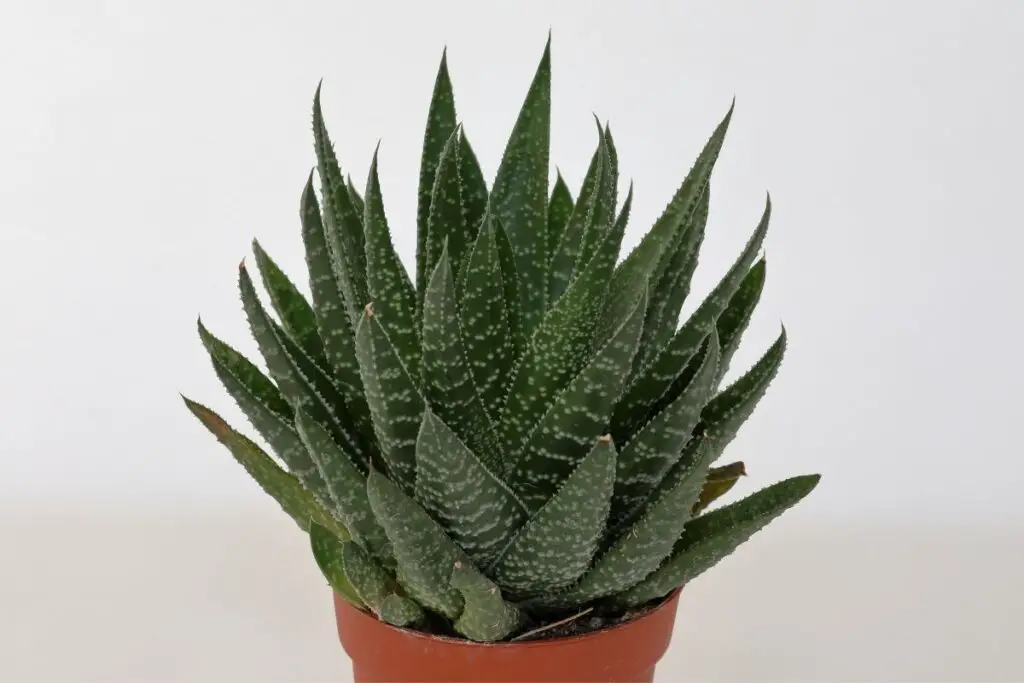
Gasteria requires bright light with less intensity, well-drained soil with a pH level of 6.0-7.0, average watering when the soil dries out, fertilizing once in the spring, and temperature ranging between 52 to 59°F.
Cold temperatures can be deadly for them.
They are ideal for zones 9 to 11.
The above features and requirements of Gasteria are quite similar to that of Haworthia.
As a result, they can be easily grown together on the same bed without any separate effort.
As Gasteria is a summer dormant succulent, they will be easy to care for along with Haworthias.
Desert Rose
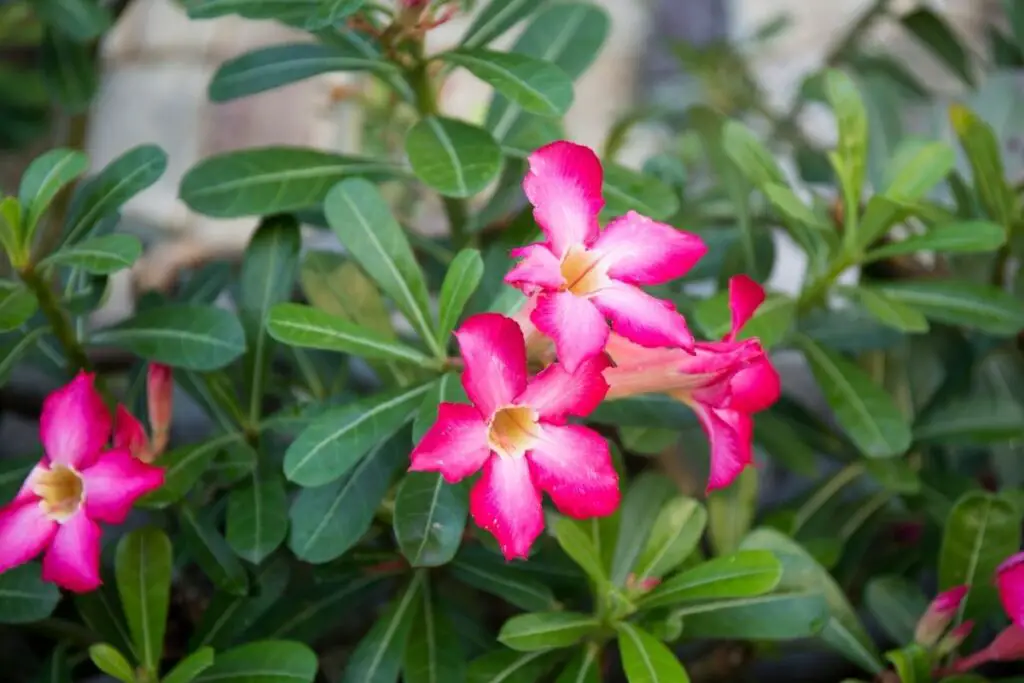
Desert Rose is also called the Adenium plant, and it’s succulent.
Growing Adenium beside Haworthia can save the latter succulent from sunburns.
Haworthias don’t grow very tall, but Adeniums are tall enough and can endure direct sunlight.
Adenium is 3 to 9 feet in height and 3 to 5 feet in width.
They require full sun to thrive.
So, if your Haworthia is getting any direct sun from any direction, place this desert plant near Haworthia.
By doing this, Adeniums will get adequate light.
The direct sunlight will get filtered and give Haworthias perfect indirect sunlight.
Moreover, the more warmth Desert Rose receives, the better they will grow.
However, you must put on shades if the sunlight starts scorching your plant.
They are perfect for growing in the same bed because both require well-drained soil, are ideal for zones 10-11, and can be fertilized once a month in the spring.
However, there are differences because they can’t be grown in the same bed.
One difference is their dormancy period. Adeniums are winter-dormant plants, whereas Haworthias are summer dormant plants.
Haworthias don’t require too much water in the summer, but Adeniums will require as they don’t stop their growth.
That is why you can’t grow them in the same bed.
But still, you can make them Haworthia’s companion if any one of them grows in containers.
Then, there won’t be any problem.
Moreover, the blooms of Adeniums with colors of pink, red, or rose can give your garden a look of a floral carpet.
But Adeniums are toxic.
So, make sure that no pets or children wander around them.
Flowering perennials and grasses
Osteospermum
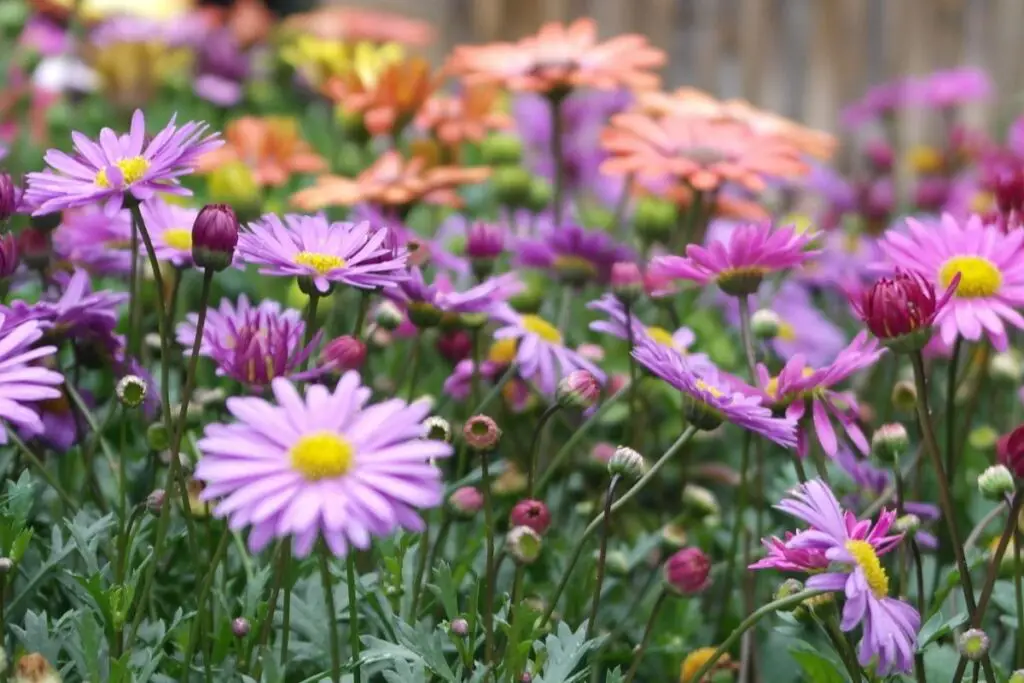
They require well-drained soil, heat, and full sun with temperatures ranging between 65 and 68°F.
They will require protection when the temperature drops below 23°F.
Though they enjoy being fertilized, they will grow ideally in poor soil.
If the soil mix doesn’t match Haworthias, you can grow Osteospermum in containers and keep them with Haworthias.
They will not only look good but will also save Haworthias from the direct sunlight.
They can grow around 2 to 5 feet.
Their height and endurance for the direct sun will save Haworthias from sunburn.
Place Osteospermum near Haworthias from where the direct sun reaches the bed.
The thing you need to do differently with Osteospermum is watering.
They require regular watering because the soil should not stay dry for too long.
However, you should let the soil dry before you water next.
Another thing is deadheading.
Since they are flowering plants, removing the spent blooms from time to time will encourage more flower growth in the next growing season.
Blue Fescue Grass
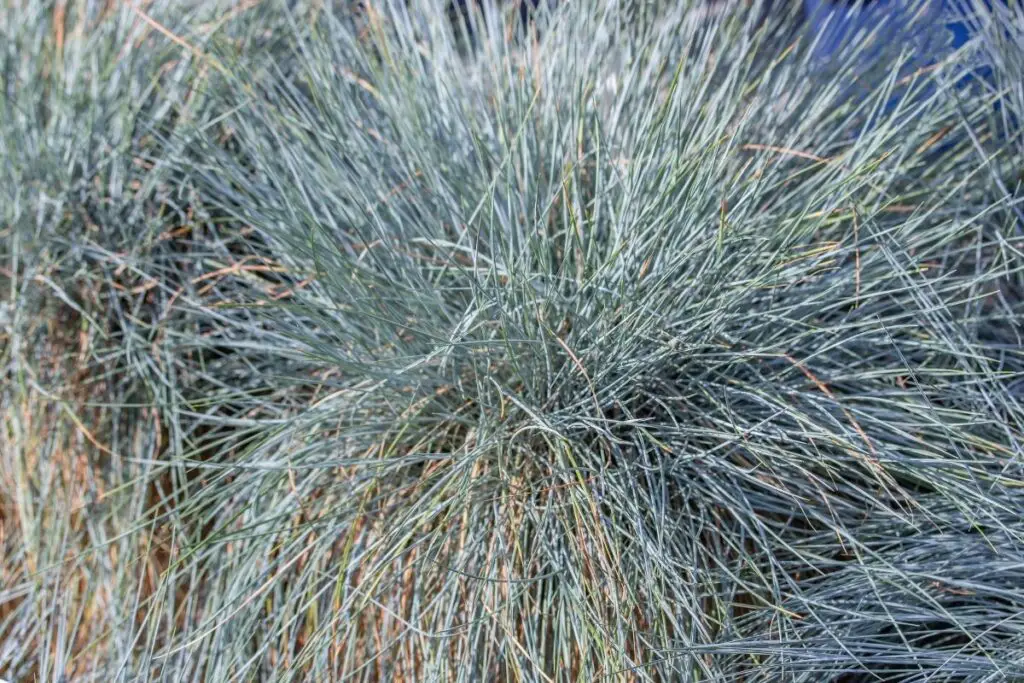
Blue Fescue Grasses are perennials that grow about 1-3 feet in height and 6-18 inches in width.
They require full to partial sun and go dormant in the summers.
They grow well in rock gardens with some garden soil.
Supplemental watering will be good for them.
When they stay dormant in the summers, you can give them the same care without any individual effort.
Blue Fescue is an ideal companion for Haworthias because both of them will do well in rock gardens, and average watering is their thing.
Haworthias naturally used to grow under shrubs and grasses over the rocks, and they will grow very well under these Blue Fescue Grasses in your garden.
The height of these grasses will save them from the direct sun.
It will also look good.
An ideal benefit of growing Blue Fescue with Haworthia is that the former is deer-resistant.
If you live in a region where deers roam about sometimes, your Haworthias are safe beside these grasses.
Yarrow
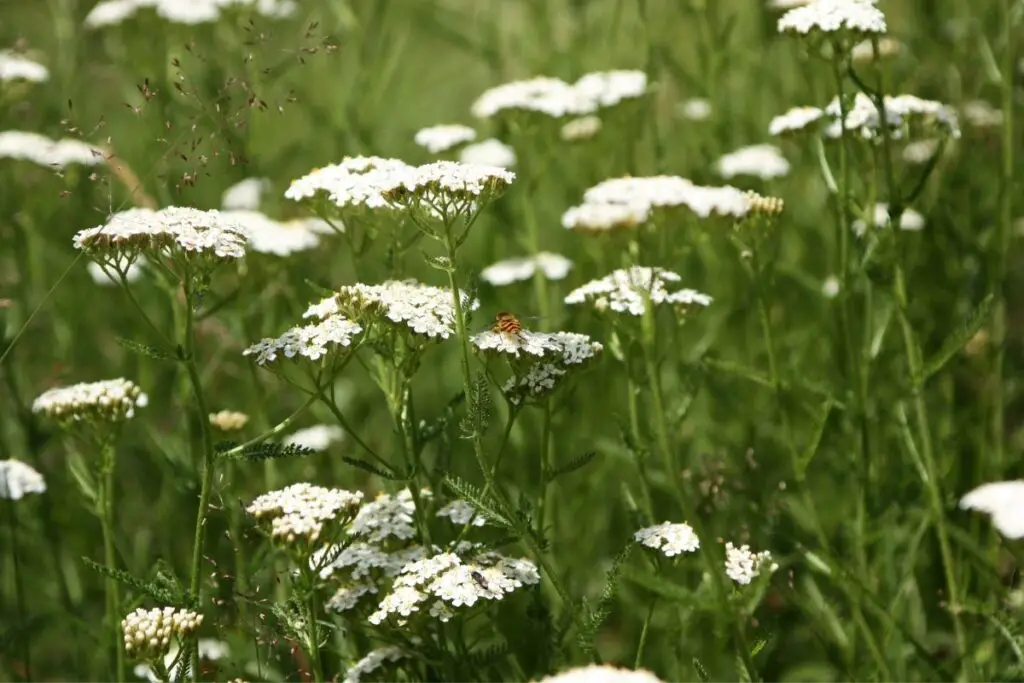
Yarrows require full sun, moderate to poor soil, average watering and are ideal for zones 3 to 9.
Though the requirements are distinctive from Haworthias, they will look good with the variegated Haworthias and other succulents.
Moreover, they will also protect them from the direct sun due to their height if placed in a proper position.
Yarrow will grow 2- feet both in height and width.
You can even grow them in the same bed because they can grow in poor soil with acidic, neutral, or alkaline pH levels.
All the need is well-drained soil.
Yarrows result in aggressive growth if fed heavily with fertilizers.
You can fertilize both of them mildly if required.
One difference is in the winter season.
Haworthias cannot tolerate cold temperatures, but Yarrows can.
However, Haworthias can tolerate cool winters.
If your region gets temperature below 30°F in the winters, you need to grow Haworthia in containers to take the pot indoors in winter.
Yarrows will be a great companion for Haworthia.
Yarrows will not only protect Haworthias but will also give your garden space a unique look.
You would also see them blooming and filling up your garden.
The only extra effort you need to take for the perennials is to deadhead them from time to time.
Haworthias also need trimming but only during their flowering time.
Haworthia flowering is rare, and you can see it if you are lucky enough.
But these flowering plants will need every time after their bloom dies.
Other than that, some perennials might differ in watering.
So you have to give extra effort there too.
There are many other plants to grow with Haworthia.
They will have the same requirements as Haworthia.
For example, Aeonium, Graptopetalum, or Haemanthus can be planted with Haworthias without any hassle.
Perennials like Rockrose or Blue Mist Spirea are also ideal companions.
You can make a separate borderline bed and grow deterrent plants like Rosemary, Lavender, and Sage.
Since their requirements are different from Haworthia’s, you can’t plant them in the same bed.
But keeping them at the border of your garden can help prevent pests.
These plants have a strong smell hated by the animals.
You can even grow multiple varieties of Haworthia to give your garden a unique look.
There are many varieties with variegated leaves, for example, pairing Fasciata with Nigra, Truncata, Cymbiformis, Cooperi, or Arachnoidea.
Peperomia
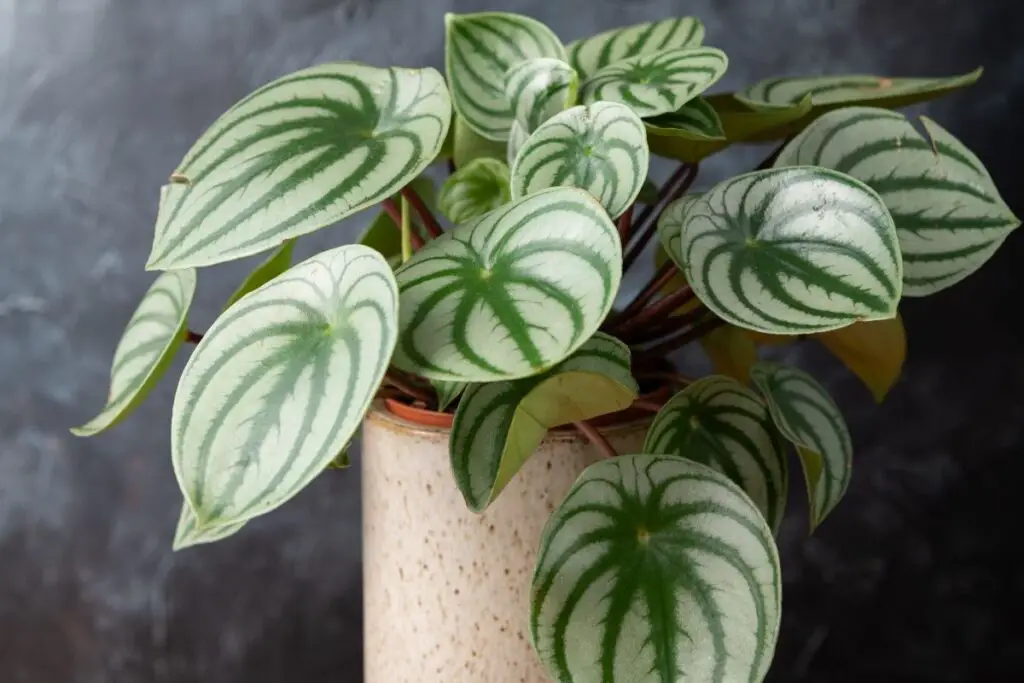
Another succulent-like perennial you can grow with Haworthia is Peperomia.
If you grow Haworthias indoors, this plant would be a great companion for Haworthia.
Though Peperomia can be grown outdoors, they do best indoors in a controlled atmosphere.
Peperomia requires indirect sunlight, an average temperature between 65 to 80°F, infrequent watering, and well-drained soil.
As these features match with Haworthias, you can seamlessly grow them together without any separate and individual effort.
You can even fertilize both of them slightly during their growing season, i.e., spring.
One more match here is toxicity.
Peperomia is non-toxic to pets and animals.
But still, you must see that pets and children don’t reach them.
While playing or loitering over, they may chew them or destroy them out of curiosity.
Final thoughts
All the mentioned plants have more or less the same requirements as Haworthias. You don’t have to work for them separately or individually.
You can pair many plants with Haworthias. Growing them together will give your garden a floral carpet effect where people would love to loiter.
However, since some plants are toxic and pets and children get attracted by colors, you need to protect your garden by creating a fence and using deterrents. For indoors, keep them somewhere up where they can’t reach.
Take care of all these plants and fulfill their basic requirements if you want to see all of them thriving and flowering all the time.
Reference: The Haworthia Society, Botanical Studies, University of Wisconsin-Madison, Sciencedirect, Researchgate, Haworthia Study.
